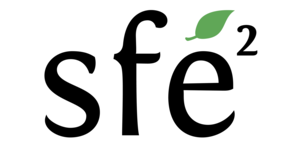Effect of underwater noise pollution on the trophic impact of the invasive “killer shrimp” Dikerogammarus villosus
Important information:
This study is part of a bigger project on noise pollution that will be proposed in the 2025 doctoral school competition for PhD scholarships.
Highly ranked master students looking for PhD projects are therefore encouraged to apply!
Key words:
acoustic playback experiments; biological invasions; fresh waters; functional response; gammarids; noise pollution; trophic impact
Context:
Inland waters are critical resources for territories given the many ecosystem services they provide. Managers worry about water overcrowding and the increasing number of powerful fuel-based motor boats. They are associated with a lot of sound emissions, both under and above water surface, which generate conflicts between users and disturb the human – nature relationship. From a broader perspective, noise pollution is a worldwide concern with many adverse effects on wildlife and human wellbeing, although the consequences on fresh waters remain under investigated. Biological invasions pose another threat to fresh waters, with the number of species introductions expected to increase in the context of globalization. Interestingly, how these two threats (noise pollution and biological invasions) interact has not been explored yet.
Aims of the study:
We want to study the effect of underwater noise pollution on the predatory behaviour of Dikerogammarus villosus, a freshwater gammarid of Ponto Caspian origin that is part of the world’s worst invasive species. As an aggressive competitor and predator, D. villosus outcompetes native invertebrates and depletes benthic resources. In the ENES facilities, predation tests will be carried out under two acoustic treatments: lake background noise alone and lake background noise supplemented with boat sounds to mimic a real boat traffic. We will test various prey items and use functional response derivation, which consists in modeling the relationship between per capita predation rate and prey density, to estimate the strength of the trophic links. We will account for D. villosus’ circadian rhythm and the fact that noise pollution from boats mostly occurs during the day while D. villosus is more active at night. Sampling will take place in Lake Bourget, the biggest French natural lake, which is also a hot spot for recreational boaters.
Related papers from the team:
Fernandez-Declerck M, Rojas E, Prosnier L, Teulier L, Dechaume-Moncharmont FX, Boyer N & Médoc V (2023) Adding insult to injury: anthropogenic noise intensifies predation risk by an invasive freshwater fish species. Biological Invasions 25: 2775–2785.
Hanache P, Spataro T, Firmat C, Boyer N, Fonseca P & Médoc V (2020) Noise-induced reduction in the attack rate of a planktivorous freshwater fish revealed by functional response analysis. Freshwater Biology 65: 75-85.
Iltis C, Spataro T & Médoc V (2018) Parasitism may alter functional response comparisons: a case study on the killer shrimp Dikerogammarus villosus and two non-invasive gammarids. Biological Invasions 20: 619-632.
Médoc V, Albert H & Spataro T (2015) Functional response comparisons among freshwater amphipods: ratio-dependence and higher predation for Gammarus pulex compared to the non-natives Dikerogammarus villosus and Echinogammarus berilloni. Biological Invasions 17: 3625-3637.
Pellan L, Médoc V, Renault D, Spataro T & Piscart C (2016) Feeding choice and predation pressure of two invasive gammarids, Gammarus tigrinus and Dikerogammarus villosus, under increasing temperature. Hydrobiologia 781: 43-54.
Rojas E, Gouret M, Agostini S, Fiorini S, Fonseca P, Lacroix G & Médoc V (2023) From behaviour to complex communities: Resilience to anthropogenic noise in a fish-induced trophic cascade. Environmental Pollution 335, 122371.
Supervisor:
Vincent Médoc, Associate Professor in Ecology and Animal Behaviour
https://vincentmedoc.wixsite.com/ecology
Research lab:
ENES Bioacoustics Research Lab
University of Saint-Etienne
https://www.eneslab.com/
Skills:
R coding, statistics, experimental design, field sampling, writing, skills in acoustics are welcome but not requested
How to apply?
CV and cover letter at
vincent.medoc@univ-st-etienne.fr
as soon as possible…

Commentaires récents